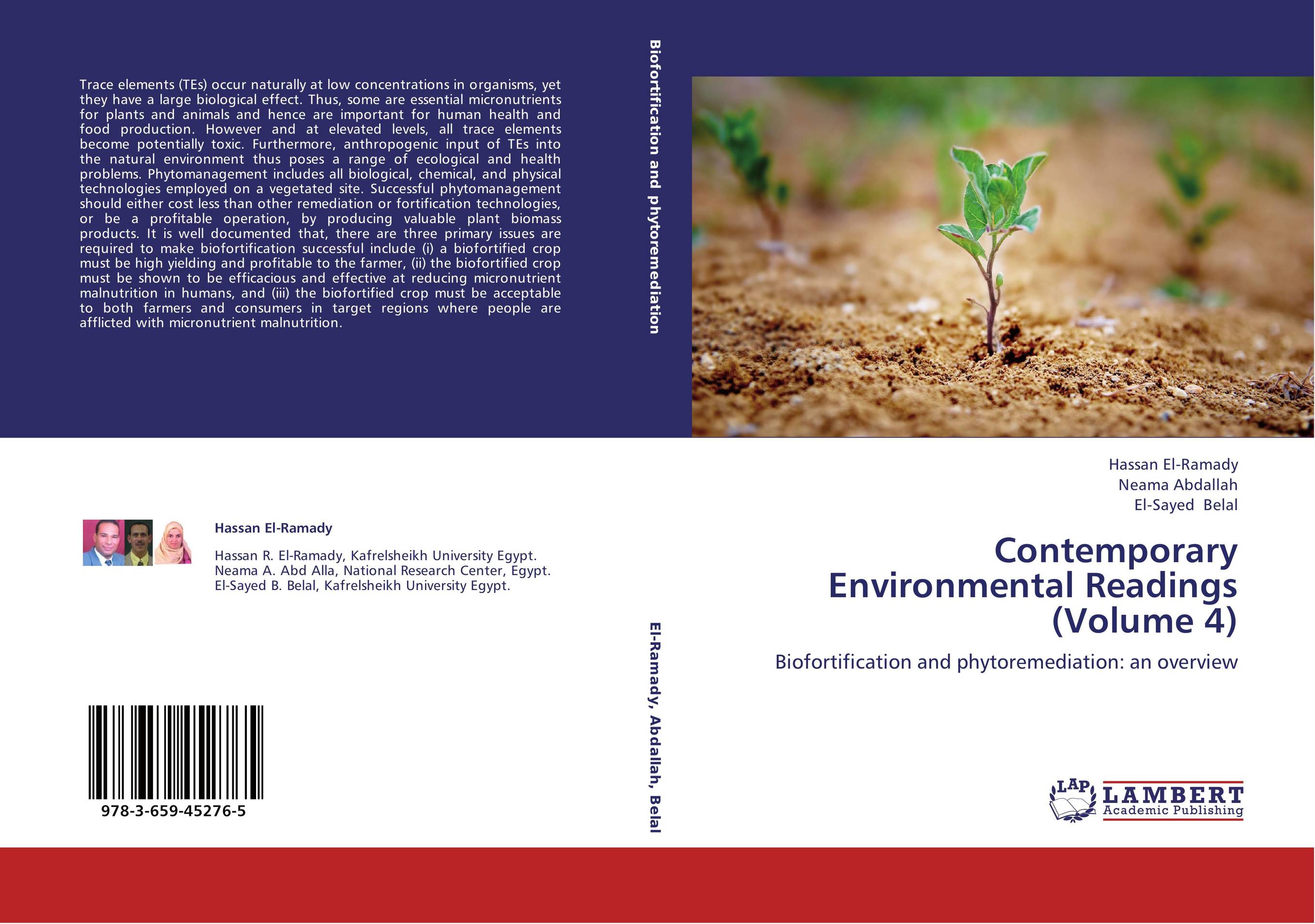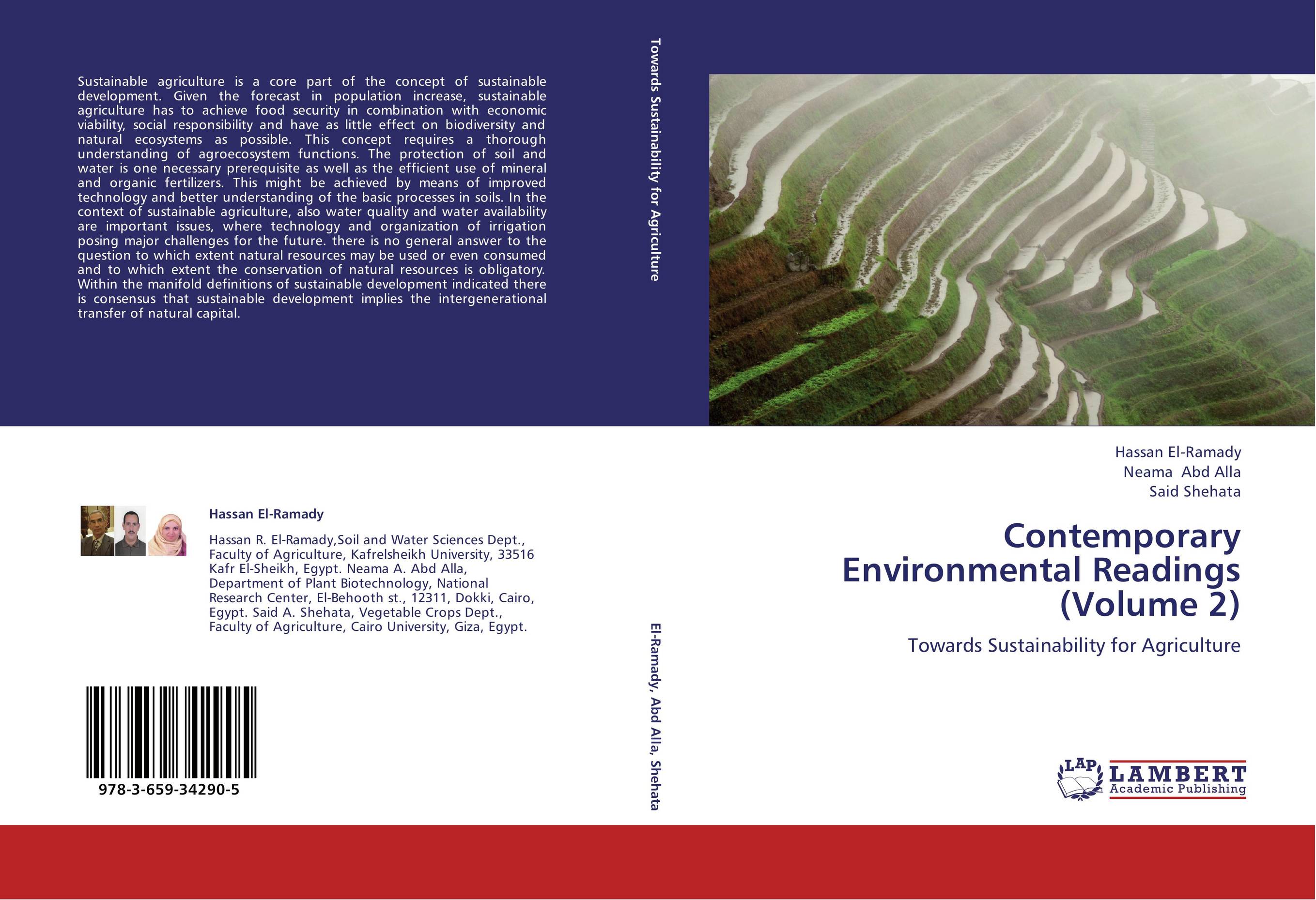| Поиск по каталогу |
|
(строгое соответствие)
|
- Профессиональная
- Научно-популярная
- Художественная
- Публицистика
- Детская
- Искусство
- Хобби, семья, дом
- Спорт
- Путеводители
- Блокноты, тетради, открытки
Contemporary Environmental Readings Volume 3. Egyptian Agriculture: Present and Future

В наличии
| Местонахождение: Алматы | Состояние экземпляра: новый |

Бумажная
версия
версия
Автор: Said Shehata,Zakaria Fawzy and Hassan El-Ramady
ISBN: 9783659444982
Год издания: 2013
Формат книги: 60×90/16 (145×215 мм)
Количество страниц: 292
Издательство: LAP LAMBERT Academic Publishing
Цена: 52261 тг
Положить в корзину
| Способы доставки в город Алматы * комплектация (срок до отгрузки) не более 2 рабочих дней |
| Самовывоз из города Алматы (пункты самовывоза партнёра CDEK) |
| Курьерская доставка CDEK из города Москва |
| Доставка Почтой России из города Москва |
Аннотация: Egypt, officially the Arab Republic of Egypt, is located in northeastern Africa for the most part of its territory and part of the Sinai Peninsula, in Asia. Egypt is the only country with a land bridge between Africa and Asia. Egypt is world renowned for being one of the first civilizations to develop irrigated agriculture, literacy, urbanization … etc. This civilization whose sections are still preserved today is the fruit of past Christian, GrecoRoman, and former aboriginal heritage of the country. Egypt has been distinguished into four Agro-ecological zones on basis of climate in combination with the physiography, natural resources, agriculture and other factors affecting the socioeconomic activities. These zones include the Nile Valley and Delta, North Coastal Zone, the Inland Sinai and Eastern Desert and the Western Desert. The sustainability of Egyptian agriculture was made possible first of all by the annual flood of the Nile and the deposition of fertile alluvial soil containing phosphorus and other minerals and traces of organic debris brought down from the mountains and swamps of lands further south.
Ключевые слова: Sustainable Agriculture, Organic Farming, Egyptian Agriculture
Похожие издания
 | Отрасли знаний: Естественные науки -> Биология Hassan El-Ramady,Neama Abdallah and El-Sayed Belal Contemporary Environmental Readings (Volume 4). Biofortification and phytoremediation: an overview. 2013 г., 288 стр., мягкий переплет Trace elements (TEs) occur naturally at low concentrations in organisms, yet they have a large biological effect. Thus, some are essential micronutrients for plants and animals and hence are important for human health and food production. However and at elevated levels, all trace elements become potentially toxic. Furthermore, anthropogenic input... | 52119 тг |
 | Отрасли экономики: Агропромышленный комплекс -> Растениеводство -> Садоводство Hassan El-Ramady,Neama Abd Alla and Said Shehata Contemporary Environmental Readings (Volume 2). Towards Sustainability for Agriculture. 2013 г., 436 стр., мягкий переплет Sustainable agriculture is a core part of the concept of sustainable development. Given the forecast in population increase, sustainable agriculture has to achieve food security in combination with economic viability, social responsibility and have as little effect on biodiversity and natural ecosystems as possible. This concept requires a... | 55488 тг |



